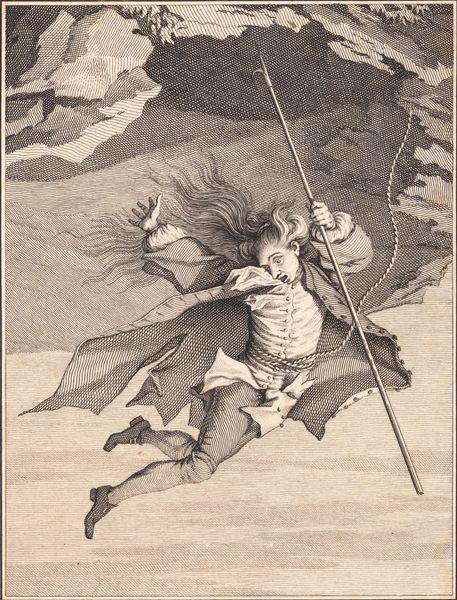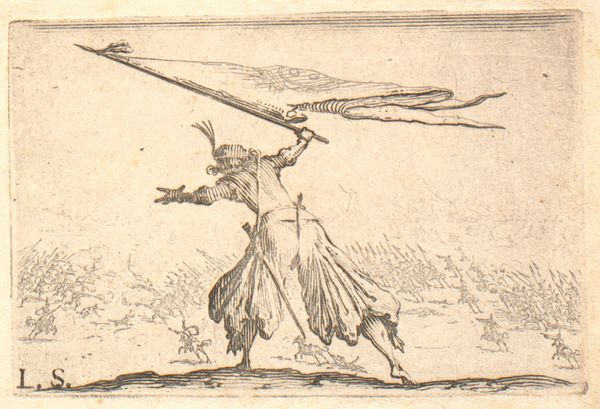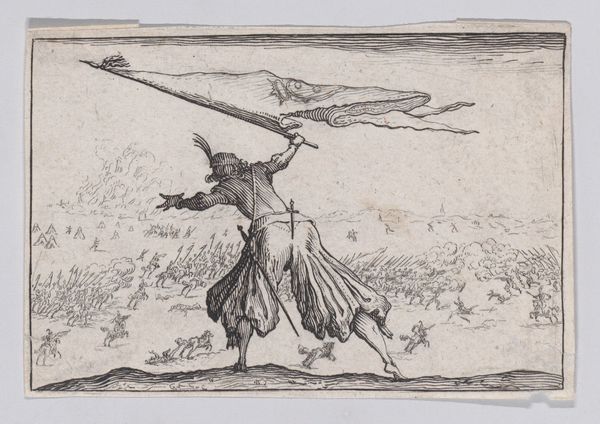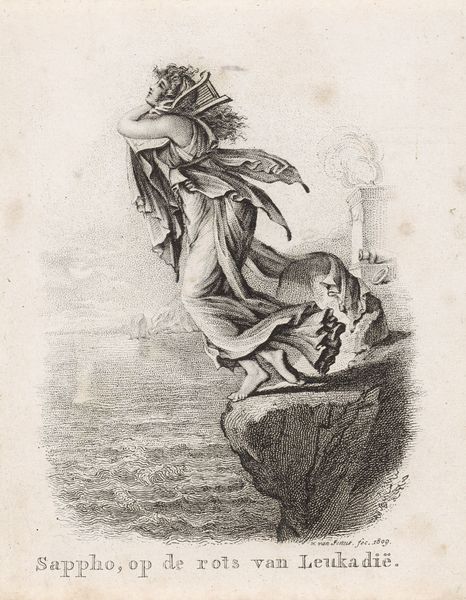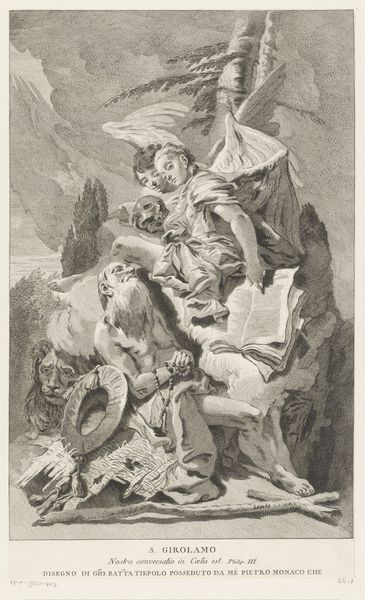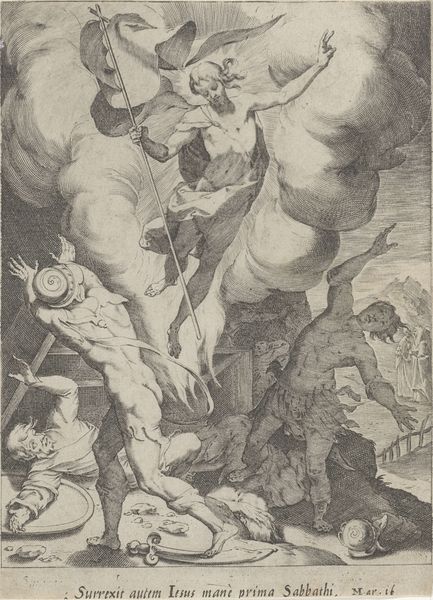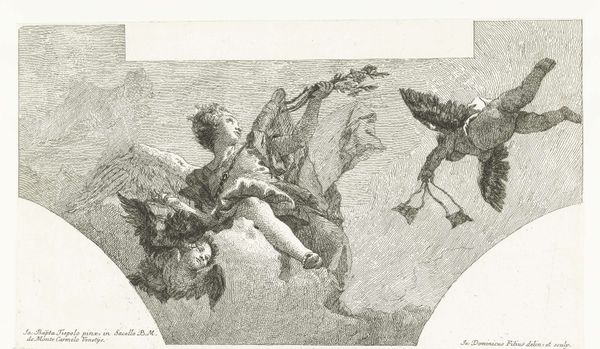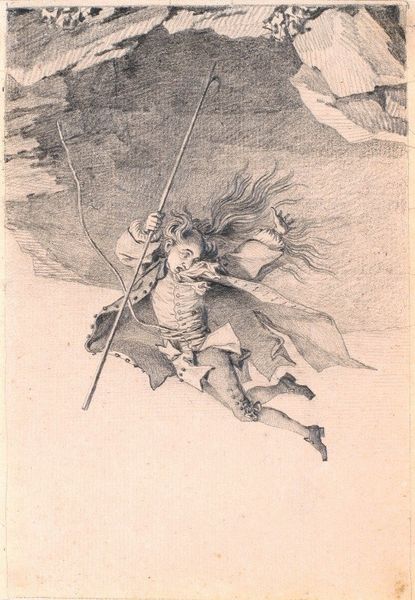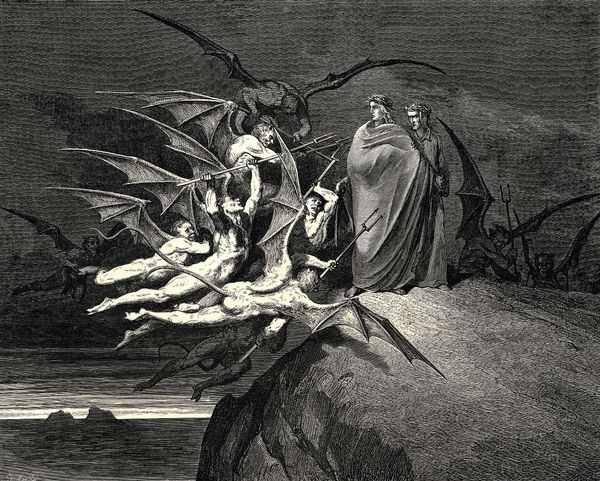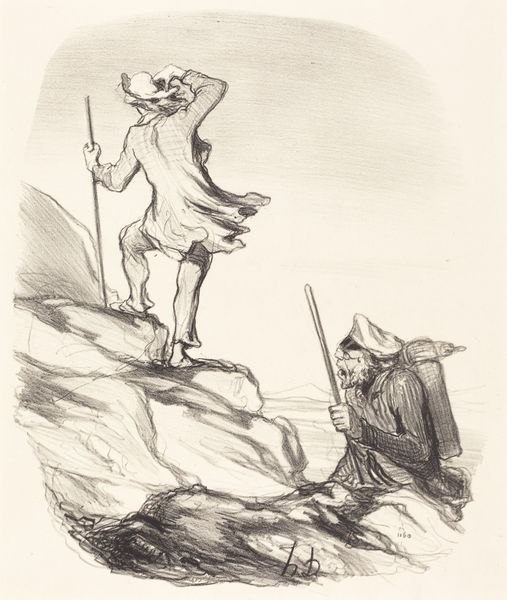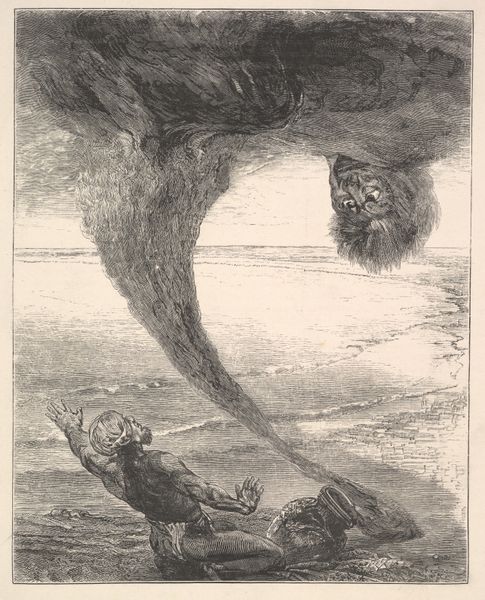
Dimensions: 186 mm (height) x 123 mm (width) (Plademål)
Curator: Oh, there's real drama in this etching, wouldn't you agree? It's titled *Niels Klims nedfart. II*, dating from 1786-1788. It was crafted by J.F. Clemens, and the work belongs to the SMK - Statens Museum for Kunst. The title translates to "Niels Klim's Descent. II." Editor: It certainly conveys a strong sense of action, but all I see are these tiny little engraved marks. There’s something inherently precarious in relying on delicate lines etched into metal to represent this guy falling… What even *is* he falling from? Curator: From what I know, Klim's fall symbolizes a descent into the unconscious, into societal critiques, into self-discovery even. His freefall mirrors our own confrontation with uncomfortable truths about ourselves. It makes you wonder about what we’re desperately grasping at to stop the plunge into ourselves. Editor: But there is also the simple, undeniable physicality of the printing process. Think about the copper plate, the acid, the meticulous labor of carving those lines… and for what? To produce multiple copies, making this once-unique image into something accessible, reproducible. It completely shifts the artistic context from high art to almost manufacturing. Curator: But even in mass production, those symbols ripple through society. This artwork comes from a longer satirical narrative. Each line, though physically made by acids, embodies that biting cultural criticism and existential angst. So the image becomes a vessel to spread societal commentaries more easily to more people! Editor: And by choosing printmaking Clemens found the means to engage with a growing reading public in the 18th century. These visual narratives found their way into commonplace books and pamphlets and then coffee houses... making societal discourse more and more widely shared. It emphasizes how crucial the physical materials and manufacturing were to spreading new ways of thinking! Curator: Absolutely. The image imprints its allegorical content on the viewer's mind. That pole Klim's holding… what does it mean? It feels as if we, like Klim, are always searching for the ground, always wanting something stable in life and to stop this descent. Editor: Maybe... or maybe we should think about who actually *owned* these prints? To afford art was, even if printed and made en masse, a mark of certain level of privilege and a marker for specific taste cultures and ideas! We cannot disconnect the idea from consumption and ownership. Curator: Indeed. Food for thought about the way meaning and materials become entwined, creating artwork for consumption, yes, but ultimately reflection. Editor: It truly changes how we think about the art's circulation, manufacture and its potential for change.
Comments
No comments
Be the first to comment and join the conversation on the ultimate creative platform.
